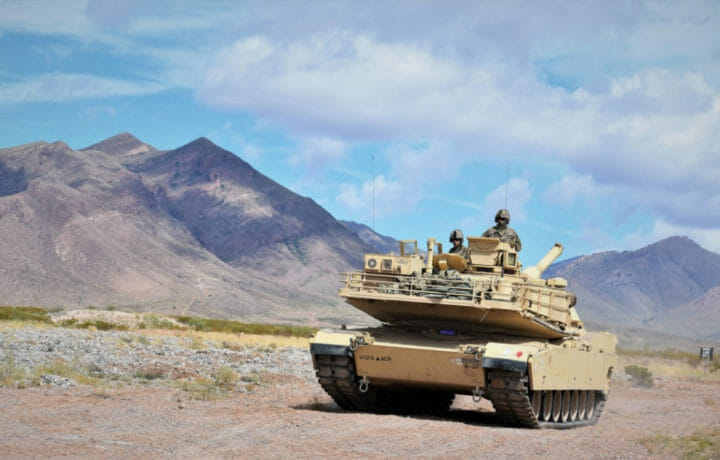In 1980, more than 40 years ago, the first batches of Abrams tanks – named for the late General Creighton W. Abrams, former Army Chief of Staff and commander of the 37th Armored Battalion – became the backbone of the armored forces of the United States military. Even after all these years, it is still considered among the best main battle tanks (MBT) in the world.
And yet, it was developed when Pac-Man was considered a cutting edge video game, and a 27-inch TV was considered big. In other words, even with dozens of upgrades big and small over the years, the third-generation Abrams is starting to show its age.
That is why the “middle aged” MBT could be set to receive one of its biggest makeovers, one that could help it remain among the best in the world for years to come.
In July, Rep. Tim Ryan (D-Ohio), vice chairman of the Defense Appropriations Subcommittee, announced that Congress had approved a $65 million contract to upgrade the M1A2 Abrams, with the work carried out at the Lima Tank Plant in Lima, Ohio.
“The Abrams has been proudly built by Ohio workers for over four decades,” Rep. Ryan, a longtime supporter of the Joint Systems Manufacturing Center in the Ohio city, said in a statement. “Not only does this funding support the men and women working every day to produce the tank, it also provides the resources needed to improve its combat effectiveness, protect the soldiers operating it, and explore the electrification of the platform. This is a big win for Ohio and the workers of Lima.”
The Lima Tank Plant is currently operated by General Dynamics Land Systems and employs at least 931 people in the surrounding community.
Addressing Potential Threats
The funding could extend the service life of the tank, and will include the integration of an unmanned turret. The MBT already has several innovative features, which include a multi-fuel turbine engine, composite armor, automated fire control system, and even enhanced protection for its crew.
However, the Abrams at 40 could be outclassed by newer tanks – most notably the Russia’s T-14 “Armata.” This next generation MBT, based on the Armata Universal Combat Platform, has been seen as a potential threat to third-generation tanks including the German Leopard II and American M1.
The T-14 features reactive armor and enhanced sensors, but most notable is that the tank is unique in that it includes an unmanned turret with an autoloader for the main gun, while the three person crew remains in a secure compartment in the main hull. Moscow has widely touted the “survivability” that the T-14 offers.
To date, the greatest threat to the T-14 has been its costs. The Russian Army had initially planned to acquire 2,300 T-14s beginning in 2014, but production and fiscal shortfalls have delayed its widespread adoption, and even to the cancelation of the main production run. As a result, only the rest batch of 100 tanks will be deployed to the elite 2nd Guards Tamanskaya Motor Rifle Division, beginning next year.
Extending the Life of the M1
Even as the U.S. Army explores the eventual replacement of the M1, beginning last year the United States Marine Corps retired all of its tanks – and some Marine Corps tank crews were able to transfer to the Army. For now however, the Army still remains committed to maintaining the M1.
It has been proven in combat and was successful in the 1991 Gulf War. While tanks may have been ill-suited to the irregular fighting that occurred in Afghanistan and Iraq, the MBT still has its proponents, which is why the Abrams continues to be upgraded.
The funding could be used to extend the service life of the tank, while in addition to the integration of the unmanned turret, the funding could be used to develop the physical architecture and mechanical requirements needed to add an Autoloader and Automated Ammunition Handling System to the Abrams. The funding could evaluate current and emerging candidates for an Integrated Active Protection System, and develop new Abrams mobility and power architecture for conversion to a Hybrid Electric Drive propulsion and power generation system.
However, just as funding has remained the T-14’s greatest foe – the same issue could threaten the Abrams’ upgrades. While the defense spending bill has been passed by the House Appropriations Committee, it must pass the full House of Representatives before moving to the Senate. Given the logjam in Congress, it could require a tank to clear it.




